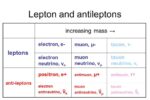Planck constant, Significance and its Discovery.
The Planck constant, denoted by the symbol “h,” is a fundamental constant in quantum mechanics that relates the energy of a single quantum of electromagnetic radiation (photon) to its frequency. It is named after the German physicist Max Planck, who introduced it in 1900 as part of his work on blackbody radiation.
What is Planck constant?
The Planck constant, denoted by the symbol “h,” is a fundamental constant in quantum mechanics that relates the energy of a single quantum of electromagnetic radiation (photon) to its frequency. It is named after the German physicist Max Planck, who introduced it in 1900 as part of his work on blackbody radiation.

Image of Planck Constant/ Credit everywavetheory.com
The Planck constant has a value of approximately 6.62607015 x 10-34 joule-seconds (J·s) in the International System of Units (SI). It is an incredibly small constant, highlighting the microscopic scale at which quantum effects become significant.
Significance of Planck Constant:
In the realm of physics, it has specific significance in several key areas:
1.Quantum Mechanics: The Planck constant is foundational to the field of quantum mechanics. It establishes the relationship between the energy and frequency of individual quanta of electromagnetic radiation (photons).
This relationship is described by the equation E = hf,
where,
- E is the energy of a photon,
- h is the Planck constant, and
- f is the frequency of the photon. This equation lies at the core of understanding the discrete and quantized nature of energy levels in quantum systems.
2.Energy Quantization: The Planck constant plays a crucial role in explaining energy quantization in physical systems. It provides a framework for understanding that energy can only be absorbed or emitted in discrete amounts, or quanta. This concept is instrumental in explaining the behavior of electrons in atoms, the emission and absorption spectra of gases, and the discrete energy levels of quantum systems.
3.Wave-Particle Duality: The Planck constant is closely linked to the wave-particle duality of matter and energy. It signifies that particles, such as electrons, can exhibit both wave-like and particle-like behavior. The Planck constant bridges the gap between these seemingly distinct properties, connecting the wave-like nature of particles (frequency) to their particle-like properties (energy).
4.Uncertainty Principle: The Planck constant is a key component of Heisenberg’s uncertainty principle. This principle states that there is an inherent limit to the precision with which certain pairs of physical properties, such as position and momentum, can be simultaneously known.
The uncertainty principle is expressed as Δx Δp ≥ h/4π,
Where,
- Δx represents the uncertainty in position,
- Δp represents the uncertainty in momentum, and
- h is the Planck constant. It implies that at the microscopic level, there are inherent uncertainties and limitations in our ability to measure certain physical quantities.
5.Quantum Electrodynamics: The Planck constant is involved in quantum electrodynamics (QED), which is a quantum field theory describing the interactions of electromagnetic fields and charged particles. QED relies on the concept of quantized energy levels and treats the electromagnetic field as composed of discrete particles (photons). The Planck constant is a fundamental factor in the equations and calculations of QED, allowing for precise predictions and explanations of electromagnetic interactions.
Discovery of Planck constant:
The discovery of the Planck constant is closely associated with the development of quantum mechanics and the understanding of the quantization of energy. Here is a brief history of its discovery:
Black Body Radiation: In the late 19th century, physicists were studying the phenomenon of black body radiation, which refers to the emission and absorption of electromagnetic radiation by an object that absorbs all incident radiation. However, classical physics failed to explain the observed spectrum of black body radiation.
Rayleigh-Jeans Law: In 1900, Lord Rayleigh and Sir James Jeans proposed an empirical equation, known as the Rayleigh-Jeans law, to describe the distribution of energy in black body radiation. However, this equation diverged at high frequencies, a problem known as the “ultraviolet catastrophe.”
Max Planck’s Solution: In 1900, Max Planck, a German physicist, proposed a revolutionary idea to explain the black body radiation spectrum. He postulated that the energy of electromagnetic radiation is quantized, meaning it can only exist in discrete packets or “quanta” of energy. Planck introduced a mathematical formula that accurately described the experimental data by assuming that the energy of each quantum is proportional to the frequency of the radiation, with the constant of proportionality being what we now know as the Planck constant (denoted as h).
Birth of Quantum Theory: Planck’s idea of energy quantization laid the foundation for the development of quantum theory. It challenged the classical view that energy is continuous and led to the recognition that particles and energy exhibit both wave-like and particle-like behaviors.
Einstein and Photons: In 1905, Albert Einstein expanded on Planck’s work by proposing that light itself consists of discrete quanta of energy, which we now call photons. This concept further solidified the notion of quantization and was crucial in explaining the photoelectric effect, for which Einstein was awarded the Nobel Prize in 1921.
Experimental Confirmation: Over the following years, numerous experiments and observations provided evidence for the quantization of energy and the existence of the Planck constant. These included investigations into the behavior of electrons, the emission and absorption spectra of atoms, and the interaction of matter with electromagnetic radiation.
Legacy: The discovery of the Planck constant marked a fundamental shift in our understanding of the microscopic world and paved the way for the development of quantum mechanics. It remains a fundamental constant in modern physics and is used to describe various phenomena, including the quantization of energy levels in atoms, the behavior of subatomic particles, and the wave-particle duality of matter and radiation.
In recognition of his groundbreaking work, Max Planck was awarded the Nobel Prize in Physics in 1918 “in recognition of the services he rendered to the advancement of Physics by his discovery of energy quanta.”
Conclusion:
Overall, the Planck constant is a fundamental constant that underpins the quantized nature of energy and the wave-particle duality of matter and energy. It is a cornerstone of quantum mechanics and plays a crucial role in understanding and describing the behavior of particles and fields at the microscopic level. The Planck constant’s significance extends beyond these aspects, influencing various areas of physics, including atomic and molecular physics, solid-state physics, and particle physics. It is an essential constant for understanding the behavior of particles at the quantum level and forms the foundation of modern quantum theory.




0 Comments